Hillary Clinton vs. the Sharing Economy?


On Monday, while the world was waiting for a word from Geneva, where the negotiators were about to announce on the agreement with Iran, the eyes of the sharing economy were focused on The New School in New York.
The reason was an economic speech from Hillary Clinton, in which she was expected to address the sharing economy for the first time. And indeed the Democratic presidential candidate did exactly that, offering the following observation:
“Many Americans are making extra money renting out a spare room, designing a website ... even driving their own car. This on-demand or so called 'gig' economy is creating exciting opportunities and unleashing innovation, but it's also raising hard questions about workplace protections and what a good job will look like in the future."
Clinton’s remarks received a lot of media attention, but the discussion was mainly either politically-oriented (for example, how it could it impact her relationships with Silicon Valley), or recycled the talking points in the ongoing debate on whether the sharing economy generates good jobs.
I’d like to add two more points to the discussion on Clinton’s remarks, including my two cents on whether she is right or wrong in her critique of the sharing economy.
Problem: The Uberization of the sharing economy
Two weeks ago I wrote here about the tension between value-based and values-based approaches in the sharing economy. While this tension doesn’t seem to be going away anytime soon, it’s also important to make it clear that, at least in the U.S., there seems to be a clear winner in the ‘fight’ between these approaches – the former.
More specifically the Uber model seems to be winning, as the endless list of on-demand companies copying the Uber model and the long list of startups wishing to become “the Uber of __________” (complete the blank for your industry of choice) indicate.
The result is what I call the Uberization of the sharing economy. Or, in the words of PandoDaily’s Sarah Lacy: “Uber IS the sharing economy.” Lacy referred to Uber’s magnitude and impact, but I believe it’s also true in terms of becoming the dominant business model in the sharing economy.
The latest example is of course Clinton’s speech, where she referred to the Uber model as representing all of the thousands of companies that are associated with the sharing economy. (It’s true she mentions other services, but they all apply the Uber model one way or another.) In other words, now the Uber model and the sharing economy become synonymous, so it’s Hillary versus the sharing economy, not Hillary versus Uber.
What’s wrong with the Uber model? It’s a fair question as, after all, this model succeeded to create a stellar user experience -- taking the friction out of the taxi-riding experience and delivering great value for its customers. However, this model reflects a flawed design that has two parties in mind -- company and customers, while the Uber business model actually includes three parties – company, service providers (drivers) and customers.
The result is a broken relationship, especially between the drivers and Uber and the drivers and customers. One Uber driver described the relationship with the company as follows: “You’d be hard-pressed to find Uber drivers with warm fuzzy feelings about the company. We are providing the services, but we are the worst paid and least respected. Travis [Kalanick] is the hero and the drivers are just peons.”
These conflicts seem to get only worse with other sharing economy companies that copy the Uber model, aiming to provide a seamless service for the users, not to create peer-to-peer relationships. As a result, humanizing these experiences becomes part of the friction that should be eliminated. This is a recipe for dystopia. These sharing economy services aren’t enhancing relationship between people, but actually eroding them.
Solution: Bottom-up innovation that's supported, not driven by, regulation
“As president, I will work with every possible partner to turn the tide to make these currents of change start working for us more than against us, to strengthen, not hollow out, the American middle class. Because I think at our best, that’s what Americans do. We are problem solvers, not deniers. We don’t hide from change; we harness it.”
Hillary Clinton doesn’t have a solution to the problem she presented. She’s not alone. Ending the Uberization of the sharing economy is not an easy task and requires offering better value for the companies, for the service providers and for the customers.
I don’t believe this solution could be driven by regulation, as top-down solutions usually don’t include innovation. The solution should be a bottom-up one driven by a new model that, as I’ve mentioned here before, will create and sustain mutually respectful relationships between these parties.
Will it be a worker cooperative? A Silicon Valley VC-funded startup? I don’t know, and it probably doesn’t matter too much. What matters is that the new model that will win over the Uber model will be based on a better design and vision, integrating usability and desirability with what Cameron Tonkinwise described as “economic relations that have a social thickness to them.”
What does this model actually looks like? I’ll share more details with you in the upcoming weeks.
Finally: Was Clinton right in her critique of the sharing economy?
I think Clinton’s critique on the Uber model is an important addition to the conversation we already have about the sustainability of this model. Somehow a dichotomy was established between providing customers with a stellar user experience and providing service providers with decent working conditions, and it’s time to show this dichotomy is false.
This conversation, driven so far mostly by service providers, media (see here and here) and the judicial system (see here and here), is important as it already started changing the dynamics of the Uberization trend with companies like Instacart offering some of their workers to become employees.
With greater exposure provided by people like Hillary Clinton, there is a good chance to change the current dynamics even further -- creating a new iteration of the sharing economy (the great economy?) that will be great for everyone involved, including the people that actually make this ‘magic’ happen – the service providers.
Image credit: VDCPIX.com, Flickr Creative Commons
Amazon Invests Big in Wind Power
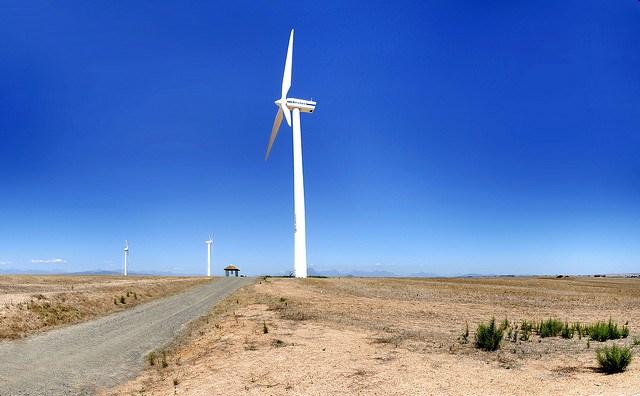

Amazon is more than just an online store. It’s a company that invests in renewable energy. Amazon Web Services (AWS) recently announced that it contracted with Iberdrola Renewables to build and operate a 208 megawatt wind farm in North Carolina's Perquimans and Pasquotank counties. When completed, it will be the first utility-scale wind farm in the state.
Called the Amazon Wind Farm U.S. East, it is expected to come online in December 2016. It will generate approximately 670,000 megawatt hours of wind energy a year. That's enough to power over 61,000 American homes annually. The energy will be delivered to the electrical grid that supplies AWS Cloud data centers.
In November 2014, AWS announced its commitment to achieve 100 percent renewable energy use globally. In April, the company announced that about 25 percent of the power it used globally comes from renewable energy. The goal is to increase that figure to at least 40 percent renewable energy use by the end of 2016.
In January, AWS announced a renewable energy project called the Amazon Wind Farm (Fowler Ridge) in Benton County, Indiana. It is expected to generate 500,000 MWh of wind power a year, or the annual energy usage of 46,000 American homes, and is expected to come online in January 2016. The energy generated will also be used to help power AWS Cloud data centers.
AWS doesn’t just invest in wind power to help meet its renewable energy goals. Last month, the company announced a solar power project called Amazon Solar Farm U.S. East in Virginia, which is expected to generate 170,000 MWh of solar power a year. It is expected to come online in October 2016 and will be the largest solar farm in Virginia with all energy generated powering AWS Cloud data centers.
Combined with the North Carolina wind farm project, Amazon’s renewable power projects will deliver over 1.3 million MWh of power, or enough energy to power 15,000 American homes a year.
The huge potential for wind power in the U.S.
Amazon’s investment in wind farms is smart given the big potential for wind power in the U.S. Currently, wind power generates enough electricity to power over 11 million American homes, according to the Natural Resources Defense Council (NRDC). In some months, wind power generates 6 percent of the nation’s electricity -- but that doesn't begin to touch its potential. Some experts think wind power could generate 30 percent of electricity needs in the U.S.
Investing in wind power is one way to reduce carbon emissions. Climate science experts say that carbon emissions need to be reduced to from the current 400 parts per million (ppm) to 350 ppm in order to avoid the worst impacts of climate change. So, wind power, and renewable energy in general, is good for the environment and the economy. The current wind power sector provides jobs for at least 75,000 Americans. A 250 MW wind farm (about 100 turbines) creates 1,073 jobs over the lifetime of the project. That's the ole triple bottom line at work.
Image credit: Flickr/Warrenski
Greenpeace Says Buy Whole Foods' Seafood


Greenpeace just released its Carting Away the Oceans report that ranks supermarkets on their efforts to protect oceans and seafood workers.
The winners that get to hoist their sails high are Whole Foods, Wegmans, Hy-Vee and Safeway. Each of these retailers use policies, political advocacy and industry conversations to address illegal and unregulated fishing as well as human rights abuses.
The losers that are stinking like rotting fish are Southeastern Grocers, Roundy’s, Publix, A&P and Save Mart. They ended up in the report’s “fail” category.
The overall findings show that retailers are not doing enough to prevent the widespread problems of illegal and unsustainable fishing as well as human rights abuses in the seafood supply chain. It’s a whale of a problem.
Human rights: Let’s play fair
Working conditions on a fishing boat are some of the worst. There isn’t much monitoring, control, surveillance or enforcement at sea. Some problems attached to the industry include low pay, poor sanitation, unsafe equipment and long working hours. There are cases of forced labor, human trafficking and murder. The high demand for cheap seafood and the race for more fish propel companies to keep fishing boats at sea longer and in dangerous situations.
I don’t have that card, go fish… With a pole
Tuna is the second most popular seafood product. Americans eat 1 billion pounds of it every year. Here’s the sad part: 80 percent of canned tuna comes from “destructive, irresponsible, and wasteful fishing practices,” according to the Greenpeace report. The biggest sharks circling in these waters of irresponsibility are StarKist, Bumble Bee and Chicken of the Sea.
On the retail end, Walmart, Kroger, Albertsons-Safeway, Publix, Delhaize and Meijer stock tuna caught through abusive and illegal practices, according to the report.
Greenpeace created the sustainability guide below that ranks the most common tuna brands. How well does the tuna you eat stack up?
The No. 1 tuna brand is Wild Planet. All Wild Planet fish are pole-and-line or troll caught. This has minimal impact to other sea creatures like turtles and dolphins.
Some brands advertise their fish as “wild caught,” which sounds great but doesn’t have anything to do with sustainable fishing -- it just means the fish were caught in the ocean (perhaps using big polluting plastic nets) instead of farmed. Other meaningless descriptions are “sustainably caught” and “responsibly caught.” Those words are empty unless accompanied by certifications and details explaining how the fish were caught.
The report also mentions a handful of companies that swam against the current and asked the government to protect ecologically rich waters like Alaska’s Bering Sea. Thank you Whole Foods, Wegmans, Giant Eagle, Costco, Roundy’s and Southeastern Grocers for asking the government to treat vulnerable areas like a seal pup and keep it nice and safe from predators.
Greenpeace has decided that petitions are nice but protests are probably more effective. Feel free to wear your Finding Nemo costume to Walmart on July 25 because Greenpeace activists will be celebrating “a day of action” at Walmart stores, everyone’s favorite retailer to hate on. The activists will speak with customers in hopes that everyone will demand that the leviathan retailer be a team player and only sell responsible seafood.
Earlier this year, protests sparked Walmart to commit to treating pigs, cows, and chickens better. Hopefully Walmart will once again be persuaded to live up to the second half of its motto, “Live better.”
Many thanks to Greenpeace for providing such a helpful report! As Finding Nemo's Dory would say, “When life gets you down do you know what you’ve gotta do? Just keep swimming, swimming, swimming.”
Image credits: Greenpeace
Comedian Mocks Congress Inaction on Healthy School Lunch


"Parks and Recreation" star Nick Offerman and comedic video website Funny or Die joined forces to create a parody on unhealthy cafeteria lunches to raise awareness for the American Heart Association. At the end of the video, "because our kids health shouldn't be a laughing matter" flashes across the screen, juxtaposing Offerman's captivating effort to convince the audience that pepperoni pizza grows on plants.
https://youtu.be/0weSjPKi4cs
There was something about the freedom of getting a $5 bill each day for lunch. Waiting all day in my fourth grade class for the lunch bell to sound so I could select from the smorgasbord of junk that my body would soon disagree with. My teachers watched carefully as I scarfed down my homemade peanut butter and jelly just so I could be the first in the snack line. Would it be ice cream, hot fries or Otis Spunkmeyer cookies? My 11-year-old self never seemed to have a propensity for saving, so why not all three?
Now, more than 1 in 3 American kids is overweight or obese — nearly triple the rate from 1963 — and lawmakers are pointing to school lunches for reform. In 2010, Congress passed and enacted the Healthy, Hunger-Free Kids Act. The initiative, which boosted nutrition standards for foods sold in schools, was only enacted as a five-year program. Without congressional action, the bill will expire on Sept. 30 of this year. The parody, aimed to highlight what kids would be eating if this bill weren't in place, raises awareness for the progress made from the act.
According to the American Heart Association, children are now eating 16 percent more vegetables and 23 percent more fruit. Children who participate in the National School Lunch Program have an overall better-quality diet, the organization said. The association also said that healthier children are more inclined to become healthy adults, a lifestyle bridge that could save billions of dollars.
First lady Michelle Obama has headed the healthier school lunches movement as well as created Let's Move, a program urging kids to exercise and combat obesity. While Obama and the American Heart Association teamed up to transform lunches in public schools, the process wasn't completely welcomed with open-arms. Students and faculty were outraged at the change in food quality after the program was introduced, with food turning from pizza to colorless yuck you may see on a Nickelodeon show or "Orange is the New Black."
In later 2014, #ThanksMichelleObama was trending on Twitter and was often accompanied with a picture of a less-than-appetizing platter of "mystery mush," as one tweet eloquently put it.
Despite the aesthetically unpleasing food in the program's inaugural year, anything is better than Offerman's "hot, moist sloppy Joes" grown from the earth. Congress only has a few months to reach an extension before kids in the country are back to eating a "fresh-picked bushel of hot, flaky fish fingers."
Image credit: Flickr/U.S. Department of Agriculture
7 Sustainability Careers with Financial Rewards
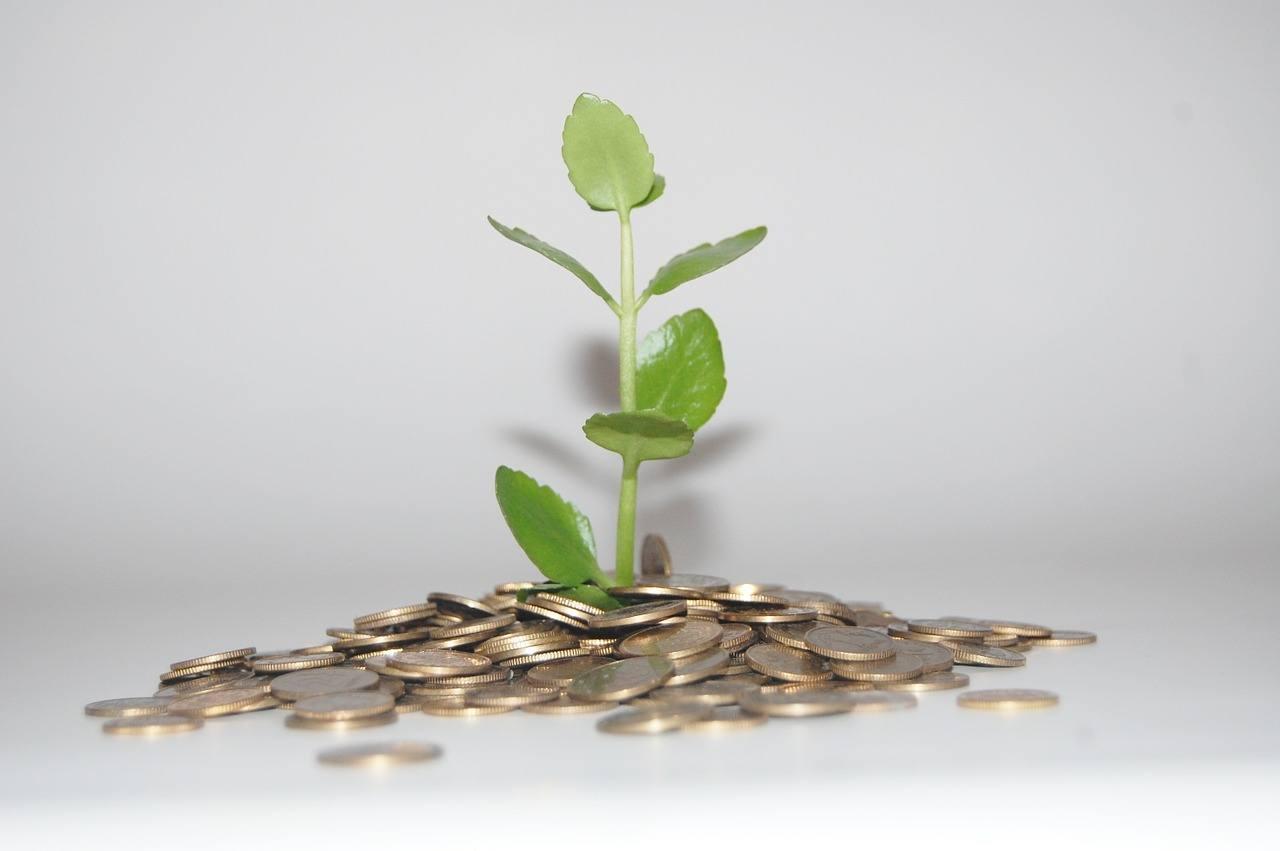

By Arsalan Ahmed
Sustainability has always been the ultimate pursuit of happiness. However, most professionals who opt for a career in sustainability do so because they value the importance of preserving our environment over the amount of money they are getting in return.
The gesture to help people and the community at large is indeed praiseworthy, but the fact is that one’s own sustainability is of equal importance, especially when there are educational liabilities after graduation to clear or a family tagging along or a large amount of student loan debt.
While entry-level jobs in sustainability may not be as lucrative, the good news is that the pay scale gets better as one goes up the ladder. Generally sustainability jobs in the sciences and management pay higher than those in social sciences and humanities. Here are seven careers in sustainability that pay more than just well.
1. Chief sustainability executives
Chief, vice-president, director – the titles generally vary, but these guys fill the top sustainability position in a corporation and rake an average salary of about $166,000 per year. They are responsible for envisioning, expanding and implementing sustainability creativities within the organization. They obviously have immense power as the buck generally stops with them when it comes to deciding how sustainability is practiced and enforced within a company.
2. Natural science managers
As the job title suggests, natural science managers are both scientists and managers who coordinate teams of scientists and researchers working collectively on sustainability projects. For instance, if there are many people, such as a chemist, an atmospheric scientist, and an environmentalist, working on one bi project, the natural science manager will overlook all of the three – and other team members included. And like most sustainability executives, science managers too earn in the six figures with an average of $114,000 per year.
3. Operations managers
Also known as general managers, operations managers bring the ideas, tone and directions of the chief sustainability executive to life in the everyday operations, processes and services of an organization. The general manager’s responsibilities include things like waste minimization, recycling, pollution prevention, and keeping a track of financials, energy efficiency and conservation. On an average, general managers are paid $95,000 per year, however in some organizations they too are paid in the six-figure bracket.
4. Chemical engineers
These engineers who are paid just about as well as general managers ($92,000 per annum) working within the sustainability industry are actually responsible for making chemical processes more environmental friendly and sustainable. Chemical engineers engineer chemicals that are biodegradable, and those that reduce pollution and waste hazards associated with processes dependent on the use of chemicals.
5. Atmospheric scientists
Atmospheric scientists generally rake in $89,000 per year. Yet their job is key to determining the sustainability of the global ecosystem. Atmospheric scientists study the effects of chemical and industrial processes on the air we breathe, and also the impact of air pollution on the climate and organisms. They are also responsible for coming up with ways to reduce the amount of air pollution.
6. Environmental engineers
Environmental engineers are paid $79,000 per year which still beats a number of high-earning jobs in the healthcare industry. Environmental engineers come up with biological and chemical solutions to a number of environmental problems including water and air pollution control, recycling, safe pest management, waste and sewage disposal, and public health issues. Other areas of focus for an environmental engineer could include developing new processes that turn waste into usable products.
7. Health and safety engineers
Health and safety engineers typically earn $75,000 a year and are responsible for designing processes and systems that help to ensure the safety of people working within a controlled organizational or non-organizational environment. They focus on the work-related safety and health of employees, air and water control, machine inspections among a number of other things.
Arsalan Ahmed is a passionate blogger who loves to write on Finance and Student Career Building related topics.
Reward clean energy drivers and save lives, urges Autogas


The re-introduction of the London congestion charge exemption for vehicles powered by LPG and incentives to convert to vehicles to the alternative fuel, could help to save the lives and improve the health of thousands of Londoners.
The claim comes from Autogas Ltd following new research by King’s College London which revealed that 9,400 die each year in London as a result of long-term exposure to air pollution, more than twice as many people as previously thought.
The premature deaths are caused by two key pollutants, nitrogen dioxide (NO2) and fine particulates (PM2.5) which are both significantly lower in vehicles powered by autogas LPG compared with both petrol and diesel. Indeed, NO2 emissions from autogas vehicles are up to 80% lower than diesel and particulates are up to 98% lower than diesel.
“These latest figures are incredibly worrying and show that immediate action is required by the Mayor’s office to protect the health and save the lives of those living and travelling into the city,” comments Linda Gomersall, general manager, Autogas.
“In the past, incentives were available to those converting to LPG. Motorists travelling into the Capital on autogas LPG were also rewarded for taking the cleaner option by receiving a 100 percent discount from the congestion charge. However, since the Mayor’s office removed this discount and the wider conversion incentive was withdrawn, many drivers fail to consider this cleaner alternative, often going back to more heavily polluting diesels.
"By re-introducing the discount for LPG powered cars and offering conversion incentives once again, many motorists will be encouraged back to the cleaner fuel and we can start making an immediate improvement in London’s air quality.”
Already, 150,000 drivers across the UK benefit from driving on autogas LPG, which as well as emitting fewer harmful pollutants, also helps users slash their fuel bills by up to 40 percent. Despite the relatively low levels of take-up in the UK, autogas LPG is widely used by more than 10 million drivers throughout the rest of Europe.
Autogas is a joint venture between Shell and Calor. Established in 2000 with the sole aim of making automotive LPG more readily available to fleet and private motorists, the company now has LPG refuelling installations on more than 215 petrol forecourts throughout the UK.
Regional Cap-and-Trade Shown to Save Money While Boosting Economy and Cutting Emissions
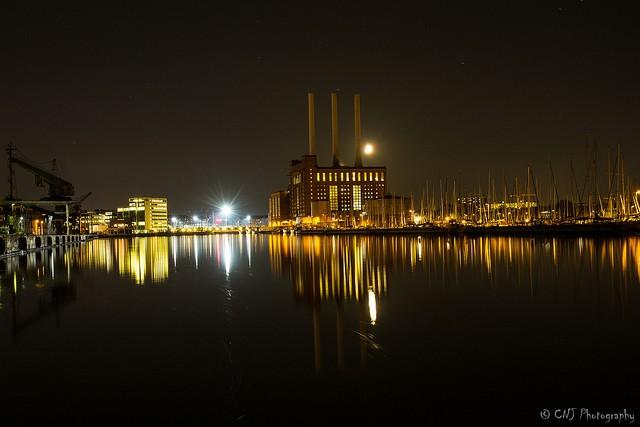

Two myths consistently being put forward by conservative think-tanks are that government regulation hurts the economy and that efforts to take action on climate change will raise energy prices.
These assertions are primarily put forth through imagined scenarios, rather than actual data. The problem with the scenarios is not that they have too much imagination in them, but rather they often don’t have enough. They tend to look at what impact a certain new rule might have, in a world where the rule takes effect and nothing else changes. They don’t reflect the true vibrancy, adaptability and creativity that exists within our economy.
For example, if a coal plant shuts down, a certain number of jobs are lost there. But that’s not the whole story. That energy will be produced somewhere else, which will create new jobs, while, at the same time, improving our air and water quality. Of course, there will be some winners and losers, but overall, the data shows that the impact of regulation on the economy is small, without even taking into account the huge, costly disasters that tend to occur when regulations are relaxed or not properly enforced. Do the words “Gulf oil spill” ring any bells?
The bigger picture is that the regulations are an effort to steer the economy in a direction that is safer, more equitable and more sustainable. They don’t always work, but that is the intention. Indeed, regulations are one of the few tools available for doing so.
Business people are always looking for opportunities. So, when prices start to go up in one area, it won’t be long before another, cheaper option suddenly appears. That’s the way the economy really works.
Let’s take a look at what’s happened to energy prices in the Northeast once a price on carbon was instituted under the Regional Greenhouse Gas Initiative (RGGI). Organizations like the Institute for Energy Research and the Heritage Foundation have argued against any type of carbon tax or cap-and-trade program, saying that they would “inflict high costs on families.”
What has actually taken place differs widely from these dire predictions. Since its inception across New England and Mid-Atlantic states in 2011, RGGI’s cap-and-trade program has produced an additional $1.3 billion in economic activity while reducing carbon emissions by 15 percent. All of this was achieved while reducing electricity prices by $460 million. That is hardly in line with the disastrous outcome that had been predicted. The nine states all saw benefits from their participation. New Jersey was initially part of the initiative, but under Gov. Chris Christie’s leadership the state withdrew in 2011.
Here’s how it works. Each state is given a cap, which is the total amount of carbon that their utilities can produce each quarter. A number of permits corresponding to the total amount of carbon are then auctioned off. The states use the proceeds raised by the auction to invest in programs that facilitate carbon reduction, such as efficiency retrofits or renewables. Then, the number of permits is gradually reduced each year.
This market-based solution provides a situation where the cleaner a utility is, the fewer permits it needs to buy. It’s simple economics. And if a state has permits left over due to the improvements they’ve made, those permits can be sold or traded to other utilities.
According to Andrea Okie, a report author from the Analysis Group who wrote a recent study on the program, the reinvestments made by the states have been key to both boosting state economies and allowing utilities to meet the targeted reductions. The states have collectively spent 59 percent of the funds on energy efficiency, 15 percent on renewables, and 13 percent on consumer financing and bill-paying assistance. An additional 12 percent went into other greenhouse gas programs and administration, and 1 percent went into clean technology research.
So, how does this reduce prices? In a few words, by reducing demand. One of the biggest costs that utilities bear is maintaining the ability to respond to demand spikes. The most highly responsive forms of generation that are used for this purpose, are among the least efficient. By reducing the need for these so-called “peaker plants,” costs go down for everyone.
Under the EPA’s new Clean Power Plan, which is due to be released next month, all states will be required to reduce the carbon emitted by their electric utilities. While some states will undoubtedly be busily hiring lawyers to fight the rule, the smart ones will take a serious look at a model like this one, which will not only allow them to meet the new EPA standards, but will also reduce costs for consumers and boost their economy at the same time.
Image credit: Christian Jacobsen: Flickr Creative Commons
Japan Transforms Abandoned Golf Courses Into Solar Power Plants
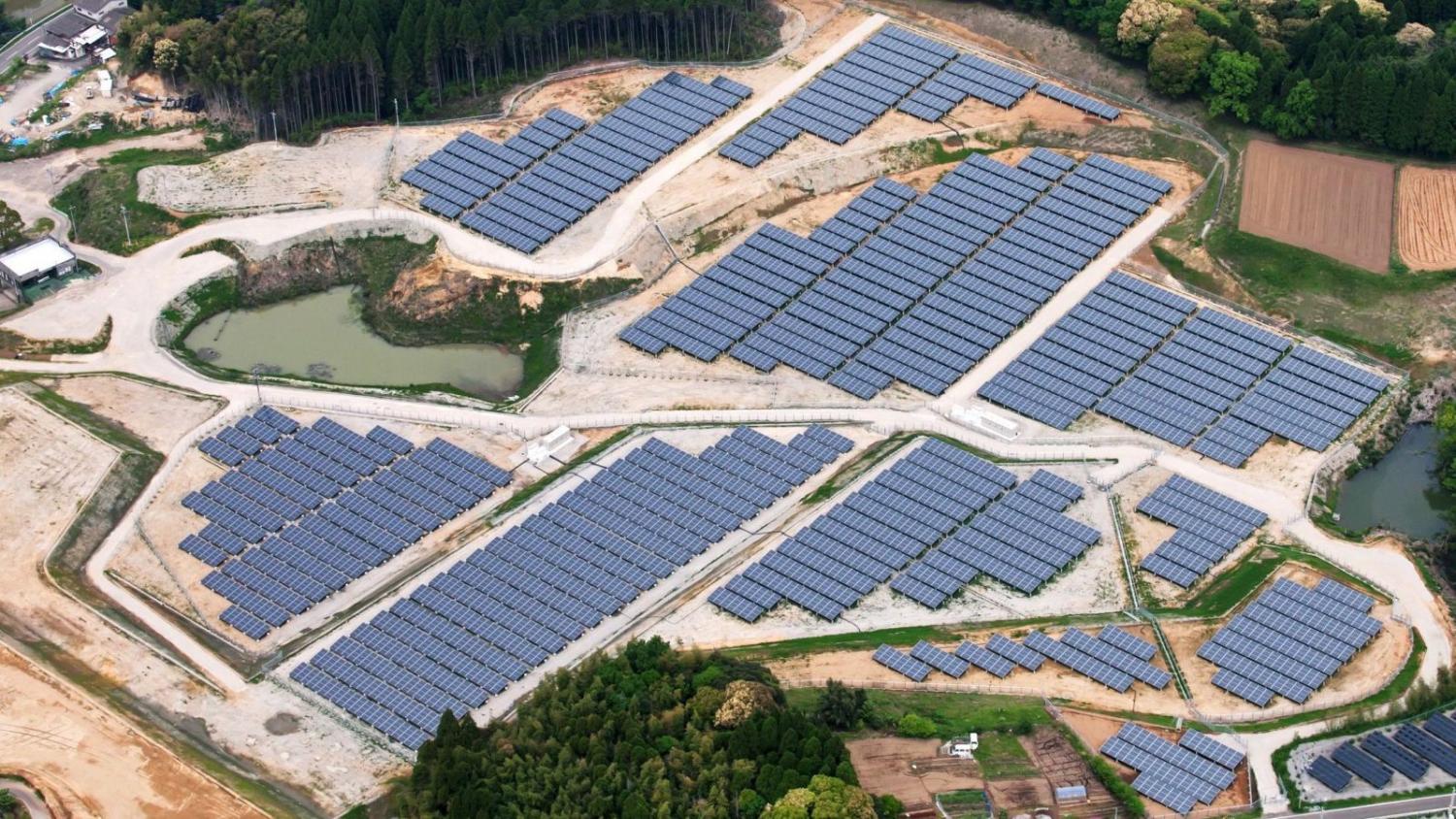

We’ve all fallen for fads and wanted the nicest product on the market. I’m unashamed to say that when Heelys were introduced in my susceptible pint-size years, I was the first kid sliding down my elementary school hallway. Or how in the '70s, it was social suicide to not have a lava lamp adorning your dresser. Well in Japan in the 1980s, the fad was to join incredibly expensive golf courses and country clubs — so much so that some clubs cost millions of dollars to be a part of.
The high interest in joining golf clubs spawned a massive rush to build more. And now, as the interest faded in the late 1990s and early 2000s, Japan is plastered with a number of abandoned golf courses.
The Fukushima nuclear disaster in 2011, which released the most radioactive material since the 1986 Chernobyl disaster, forced Japanese officials to revisit their current energy plan. Now faced with a proposal to double the amount of renewable power sources by 2030, Japan is quickly looking for solutions. In fact, the country is already building solar power plants that float on water to capture the sun’s heat on the warm Pacific Ocean.
Staring down a goal that must be fulfilled in 15 short years, Japan is turning to the logical option of constructing solar plants on its many abandon golf courses. Kyocera, a solar power company, recently announced that it broke ground on a 23-megawatt solar plant on an old golf course the Kyoto prefecture. Estimates suggest that once the 18 holes are transformed fully in 2017, the plant will generate enough electricity for 8,100 local homes annually.
But, that’s just the beginning: Kyocera also announced its intention to start construction on another golf course next year that would bring enough power to 30,500 households. The anticipated 92-megawatt plant will boast more than 340,000 solar panels and is expected to be operational in 2018. Other energy companies want in on the action, as Pacifico Energy is also building solar plants on the old links in Japan. Both companies are selling the electricity generated to a local utility.
Replacing golf courses with solar plants is an interesting idea, and it may catch on sooner rather than later. The United States already has plans to replace the courses in New York and Minnesota, with other states likely on their way, too.
Photo courtesy of Kyocera
The Case for Saving Water (And Not Just in Drought-Stricken California)


I grew up in a very water-conscious household. We weren't living in a drought-ridden area like California is today, but my parents understood scarcity, having grown in a country, India, where water could never be taken for granted.
This meant I grew up with a cut-open gallon jug in our sink, which we would fill up with usable water (leftover coffee, the rinse from non-meat pots and pans) to feed our plants; short showers (with buckets to catch the cold water while we waited for it to heat up); and reusing glasses and other dishes as often as possible. It was a way of living, which I internalized and, eventually, turned into my full-fledged adult environmentalism.
So, when I read this article from the New York Times on how chefs and other food producers in California are using new practices to minimize water usage, it struck home. These are exactly the things my family has been doing for decades, and a lot more.
Using pressure cookers instead of blanching and pouring leftover water in gardens are familiar, but rigging air-conditioners to air-clean dishes, cooking pasta with cold water, making pho in a pressure cooker, and steaming instead of boiling were new to me. The article talks about how chefs across the state are changing their practices and their use of ingredients to better manage water.
It shows a new reality – how people all across California are making small, but significant, changes in their daily lifestyles to help the state deal with the drought. I know many who are taking shorter showers, letting their lawns go dry and refusing tap water at restaurants. As articles on Triple Pundit have shown, as a society California has a long way to go to reach other dry regions such as Israel or Australia, which use far less water per-capita than Californians, but these social changes are the first step toward a sustainable water culture.
The drought will not be with us forever, but other challenges facing water – growing population, pollution and transportation – will. What I fear is that, once the rains begin, people will revert back to their old practices. It is telling that only those in the drought-affected West are minimizing water usage, even though California's water crisis affects the entire nation. Climate change will likely make droughts more common across many parts of the world. Therefore, we all, no matter where we live, need to begin preserving water in our daily lives.
Saving water shouldn't just be something that we do when the soil is dry; it is something we need to make a part of our lives, in how we live and what we consume. Sustainability needs to be a part of us no matter how wet or dry the climate is, because we have to think about the bigger picture. My parents never let go of their water-stingy ways despite being in America for over three decades, because they never forgot that there are millions around the world who lack access to clean water. Had all Californians been like them, we probably wouldn't be facing such a scary water crisis now.
Image credit: Robert Wade
Solar Power Continues Its March to the Mainstream
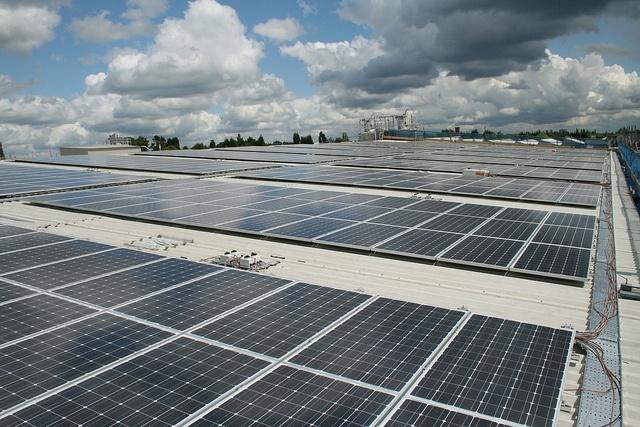

The impacts of climate change are being felt around the globe, with higher temperatures and more natural disasters such as flooding. For too long we have relied on dirty fossil fuels to make modern life possible. For years, some argued that widespread adoption of solar power would be too expensive. Fortunately, analysis after analysis have proven critics wrong.
The most recent assessment is by the Union of Concerned Scientists (UCS), which points out that costs for large-scale solar power projects dropped by 7 percent in 2014. Costs have decreased by more than half since 2009, according to the report.
The ol' Oracle of Omaha is even investing in solar power: Warren Buffett’s Nevada utility, Berkshire Hathaway subsidiary NV Energy, agreed to purchase solar power from a 100-megawatt project First Solar is developing, Bloomberg reports. NV Energy will pay 3.87 cents per kilowatt-hour. In 2014, the utility paid 13.77 cents per kWh for renewable energy. As Bloomberg put it, “The rapid decline is a sign that solar energy is becoming a mainstream technology with fewer perceived risks.” Yes, indeed it is a sign that solar power is becoming mainstream.
This year alone, solar power in six of the largest metropolitan areas in the U.S. -- representing over 30 million Americans -- reached parity with utility electricity prices, according to the Institute for Local Self Reliance (ILSR). That's three times more than previous assessments by the ILSR, which predicted only two metropolitan areas would reach solar parity by 2015.
A report released in January by North Carolina Clean Energy Technology Center found that, in 46 of America’s largest cities, a typically sized photovoltaic solar power system that is fully-financed is a better investment than the stock market. In 42 of those cities, a PV system costs less than energy from the local utility. An estimated 9.1 million single-family homeowners in America’s 50 largest cities already live where solar costs less than their local utility rates if they bought a PV system outright.
The UCS predicts that by 2017 over half of the states in the U.S. could have rooftop solar systems that are as cheap as local utility rates. Since 2007, the price of installing a typically sized PV rooftop system has dropped by almost half. In leading states, a 5-kilowatt system could cost homeowners less than $10,000 after accounting for tax credits, rebates and other forms of support.
Let’s look at an analysis from last year: A report by the Energy Department’s National Renewable Energy Laboratory (NREL) and Lawrence Berkeley National Laboratory found that the reported prices of residential and commercial PV systems have dropped in recent years. From 1998 to 2013, prices dropped by 6 to 7 percent. In just one year, 2012 to 2013, the prices dropped 12 to 15 percent.
Solar power becoming mainstream is good news for the planet and its inhabitants. Climate scientists say that in order to avoid the worst impacts of climate change we need to reduce carbon emissions to 350 parts per million (PPM) from the current 400 PPM. And renewable energy is an easy and cheap way to reduce these emissions.
Image credit: Flickr/h080